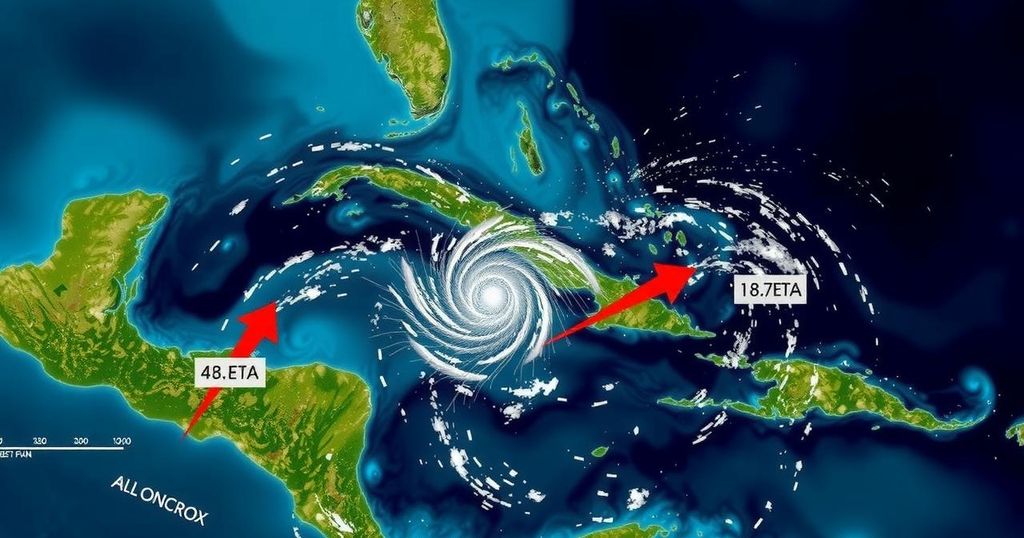Hurricane Rafael Weakens as It Moves Across the Gulf of Mexico
Hurricane Rafael is now a Category 2 storm moving west across the Gulf of Mexico, expected to weaken due to unfavorable conditions. After causing significant damage in Cuba, where it made landfall as a Category 3 hurricane, forecasters indicate potential life-threatening surf conditions in the Gulf. There is a low likelihood of another tropical disturbance forming near Puerto Rico and Haiti.
Hurricane Rafael has escalated to a Category 2 storm and is projected to travel slowly westward across the Gulf of Mexico in the upcoming days. It is anticipated that unfavorable conditions, including strong wind shear, dry air, and cooler ocean waters, may contribute to the storm’s weakening. The National Hurricane Center forecasts that by the time Rafael approaches Mexico on Sunday, it might downgrade to a tropical storm. Following Rafael’s landfall in western Cuba as a Category 3 hurricane, the storm caused significant damage, disrupting the already struggling electrical infrastructure in the nation. In the wake of this event, the tropical storm warning for the Dry Tortugas has been lifted, and there are currently no active watches or warnings for the region. Nevertheless, forecasters have cautioned that the storm could produce “life-threatening” surf and rip current conditions across the Gulf. On another note, the hurricane center revised downwards the likelihood of a new tropical disturbance forming north of Puerto Rico and Haiti, estimating a 20% chance of it developing into a tropical depression over the next few days. The next name on the Atlantic hurricane list is Sara, signaling that the season remains active amidst ongoing weather challenges.
Hurricane Rafael poses a significant threat to the Gulf of Mexico region after having already impacted Cuba adversely. The storm’s classification and anticipated trajectory reveal issues that could alter its intensity as it travels through less favorable conditions. The weakening factors at play are critical for both mitigating damage potential and understanding hurricane dynamics in the context of seasonal weather phenomena. The history of damage caused by hurricanes in Cuba highlights the need for vigilance and preparedness among affected populations.
In summary, Hurricane Rafael presents both immediate and potential long-term threats due to its current trajectory and intensity characteristics. The storm’s impact on Cuba serves as a reminder of the infrastructural vulnerabilities faced by the region. As Rafael approaches Mexico, ongoing assessments of its strength and associated risks will remain crucial for safety and mitigation efforts across the Gulf.
Original Source: www.tampabay.com




Post Comment